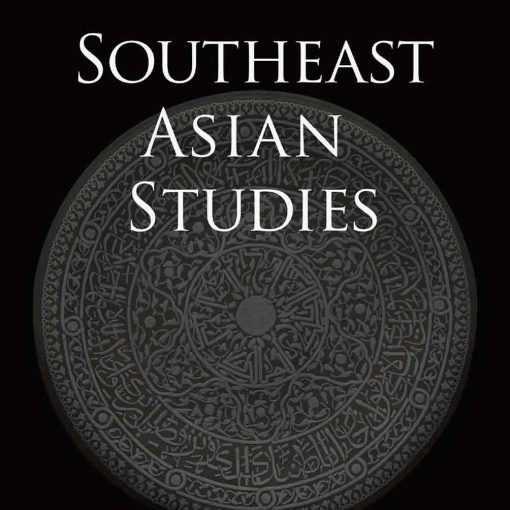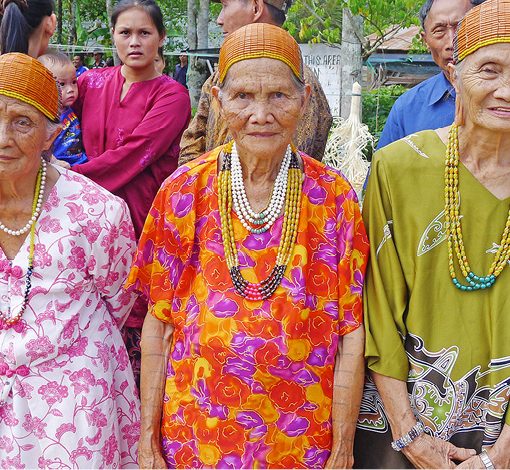Contents>> Vol. 9, No. 2
Rebel Politics: A Political Sociology of Armed Struggle in Myanmar’s Borderlands
David Brenner
Ithaca: Cornell University Press, 2019.
Rebel Politics explains the breakdown of the Kachin Independence Organisation (KIO) ceasefire in 2011 and the gradual re-escalation of conflict in the territories of the Karen National Union (KNU) after that organization’s signing of a 2012 ceasefire, culminating in the KNU’s recusal from the 21st Century Panglong peace process in 2018, by focusing on the internal politics of these two politico-military movements.1) Through this analysis, David Brenner attempts to add a third plank to studies of (political) armed groups. Alongside the horizontal relationships between rebel leaders and their supposedly loyal factions, and the vertical governance relationships between rebels and local communities, he asks us to focus on the intramural politics of the rebel groups, arguing that (at least in these two cases) this struggle over power and leadership was decisive in shaping the trajectory of these movements.
Brenner argues that the co-optation of rebel leadership has been a core component of the Myanmar armed forces’ (Tatmadaw) approach to counterinsurgency since the early 1990s. This co-optation strategy involves the collaborative exploitation of natural resources by Tatmadaw generals, rebel leaders, Tatmadaw-connected “crony” capitalists, and foreign (mostly Chinese) companies. In exchange for these rents, rebel leaders are expected to agree to ceasefires and permit the development of state infrastructure—including roads, bridges, and hydropower dams—as well as resource extraction, land grabbing, and private development, in particular (in the case of the Kachin territory) Chinese tourism in the near-abroad, which is centered on gambling, hotels, and prostitution.
Leaders of the KIO and KNU were encouraged to accept ceasefires by a general state of exhaustion with the armed struggle (after more than 60 years in the case of the KNU). They faced increased pressure from the Tatmadaw, which had modernized, expanded, and adopted a largely successful divide-and-conquer approach to the country’s many rebel movements in the 1990s and 2000s. In the case of the KNU, the liberalization of Myanmar’s trade had led to the withdrawal of support by former patrons in the Thai military, who no longer depended on armed groups conducting cross-border smuggling to access the Burmese market. KIO and KNU leaders were also apparently motivated by a belief that peace (or at least abatement of conflict) would deliver benefits to the leaders themselves, but also to their communities of supporters.
Ceasefire agreements brought some measure of prosperity to KIO and KNU territories but also increased drug abuse and associated criminality, the presence of Tatmadaw forces in areas where they had previously been absent, rampant environmental degradation, and forced displacement from land to make it available for development projects or resource extraction. Moreover, the state of ceasefire and the availability of rents from private enterprise allowed KIO and KNU leaders and their loyalists to divorce themselves from their co-ethnic communities, on whom they became less dependent for recruits and tax revenues. Brenner theorizes this disconnection as the breakdown of legitimacy and the disembedding of rebel movements from the communities they claimed to represent.
Rebel Politics argues that the detriments of “ceasefire capitalism” (Woods 2011) led to a desire for an alternative political project, which some entrepreneurs within the KNU and KIO were able to harness to lead factional struggles for power—largely successful in the case of the KIO faction associated with the leaders of the KIO’s youth wing, Education and Economic Development for Youth (EEDY), Sumlut Gun Maw, Htang Gam Shawng, and U La Nan, and more ambiguously successful in the case of the KNU Concerned Group faction. These revitalization movements have posed a significant threat to the attempt to achieve a comprehensive settlement to the armed conflict in Myanmar, as they are skeptical of the peace terms on offer and of the requirement to abide by a ceasefire (and all it entails) as a precondition for participating in the peace process. The origins and trajectories of these dissident, revitalization movements form the substance of the two case studies in Rebel Politics. These case studies are based on long-term fieldwork in rebel-held territories, as well as unprecedented high-level access to the leaderships of the two movements, which provided an opportunity to observe the leadership struggles at close range.
The focus of the KNU case (ch. 3) is on the marginalization and resurgence of KNU leaders Naw Zipporah Sein, Baw Kyaw Heh, and David Tharckabaw (who were skeptical of the ceasefire terms on offer by the then-Thein Sein government) by KNLA Generals Mutu Say Poe and Saw Johnny and KNU General Secretary Kwe Htoo Win. Generals Mutu and Saw Johnny were delegated to discuss ceasefire terms with the government in 2012, but they exceeded their mandate by agreeing to a ceasefire. This unauthorized agreement set off a leadership breach in the KNU, with the Executive Committee at first dismissing its architects, and then the Central Committee reinstating them a week later to avoid fracturing the movement. This apparently left the pro-ceasefire faction preeminent within the structure of the movement (though a more complete description of the structure of the KNU’s political processes might have aided the reader’s understanding of exactly how). At the same time, the ceasefire faction rapidly began to lose support as junior enlisted members and grassroots communities objected that the faction had apparently been willing to sell out the revolution for a few development concessions. A new faction, the KNU Concerned Group, led by Naw Zipporah, Tharckabaw, and Baw Kyaw Heh and drawing significant support from KNU Brigade 5, arose to challenge the ceasefire supporters. Insubordination by this Concerned Group and its supporters, who attacked Tatmadaw units that were intruding into KNU territory as part of a roadbuilding project despite the continued commitment of the leadership to the ceasefire, led the KNU to suspend its participation in the peace process in 2018.
The KIO case (ch. 4) covers the ceasefire period, beginning in 1994, and the emergence of a dissident movement within the KIA, beginning in EEDY, established by Sumlut Gun Maw and Htang Gam Shawng in 2003. EEDY, later led by U La Nan, attempted to revitalize the armed movement from the ground up, focusing on ideological and military training of young recruits. As the Tatmadaw attempted to consolidate its control over ceasefire armed groups including the KIO, insisting they transform themselves into subordinate militias of the Tatmadaw, the young officers associated with EEDY asserted their opposition and made a play for the leadership: “The young officers incorporated those [senior leaders] they could, forced others to retire, and sidelined still others while letting them keep their formal standing” (p. 93). The rise of EEDY led to a confrontation over the China-backed mega-dam project at Myitsone. KIO leaders declared their opposition, and when Tatmadaw troops moved to secure the site, this triggered a new round of intense fighting and the end of the ceasefire.
Brenner describes the trajectory of his two cases as “leadership co-optation; group fragmentation; contention over authority; and renewed resistance from within” (p. 99). While this trajectory is clearly documented in both cases, the reader is left unsure of its implications. There are at least four causal explanations for which the two case studies provide evidence. First, it may be that the basic premise of ceasefires-for-development was a valid approach to gaining the consent of the KIO and KNU (or of Kachin and Karen communities), but top leaders of the two organizations engaged in corruption and self-dealing, alienating those outside their core clique. Second, it may be that ceasefire capitalism is incompatible with justice or even a minimally inclusive form of development, that it is a coercive project of hyperexploitation—of people, of land—requiring the violent displacement of civilian populations. The only collateral benefits of ceasefire capitalism, then, are in the form of protection money paid to those able to credibly threaten to stand in its way.
Third, it may be the case that the apparent abandonment of the self-determination project, in favor of the uneasy compromise of a ceasefire, was inconsistent with the political aspirations of Karen and Kachin communities. Hence, reformist leaders were successful because they could credibly promise to revitalize this project (which was supported by the emphasis on ideological training in the KIO youth movement). Fourth, it may be that personal enrichment isolated leaders within the KNU and KIO (and their factions) from their broader movements and civilian constituents, drawing these leaders into large towns and cities where their new wealth could be better enjoyed, and leading to the disembedding of these leadership factions from their constituencies. Reformist leaders such as Baw Kyaw Heh of the KNU and Gun Maw, Gam Shawng, and U La Nan in the KIO were, therefore, successful because they were willing to do the work of political mobilization.
These four explanations are not necessarily incompatible, but they carry different implications: is it more important that rebel movements defend communities from attack/displacement, or that they provide them with economic benefits, or that they offer a compelling political/ideological project, or that they be embedded in communities and engaged in reciprocal relationships of governance? Brenner seems to favor “sociological” explanations (Brenner 2020) consistent with the last two arguments; other scholars of support for armed groups have argued for the primacy of coercive authority, or the capacity to monopolize force in a territory and exclude the chaos and predation that comes when coercive authority is contested (Kalyvas 2006, 91–116, 173–180; Malthaner 2015; Ross 2019).
Rebel Politics’ documentation of pivotal points in the recent histories of the KNU and KIO, supported by extended, high-level fieldwork, makes a valuable contribution to emerging scholarship on the intramural politics of rebel movements, which complements Brenner’s prior work on this topic (2015; 2017; 2018). Rebel Politics offers a corrective to optimistic predictions that the peace process, initiated by the Thein Sein government and continued under the present government of State Counsellor Aung San Suu Kyi, will resolve the long-standing armed conflict between Myanmar’s many ethnic armed organizations and the central state through a process that focuses on delivering a peace dividend of increased development. The roots of the KNU and KIO rebellions are deep, and communities have shown themselves capable of holding armed groups faithful to the project of self-determination.
Nicholas Ross
Australian National University
References
Brenner, David. 2020. Perspectives on War, Peace, and Rebel Politics: David’s Response: Taking the Conversation Forward (Part 4). Tea Circle (blog). April 17. https://teacircleoxford.com/2020/04/17/perspectives-on-war-peace-and-rebel-politics-davids-response-taking-the-conversation-forward/, accessed May 13, 2020.
―. 2018. Inside the Karen Insurgency: Explaining Conflict and Conciliation in Myanmar’s Changing Borderlands. Asian Security 14(2): 83–99. doi: 10.1080/14799855.2017.1293657.
―. 2017. Authority in Rebel Groups: Identity, Recognition and the Struggle over Legitimacy. Contemporary Politics 23(4): 408–426. doi: 10.1080/13569775.2017.1324235.
―. 2015. Ashes of Co-optation: From Armed Group Fragmentation to the Rebuilding of Popular Insurgency in Myanmar. Conflict, Security & Development 15(4): 337–358. doi: 10.1080/14678802.2015.1071974.
Kalyvas, Stathis N. 2006. The Logic of Violence in Civil War. Cambridge: Cambridge University Press.
Malthaner, Stefan. 2015. Violence, Legitimacy, and Control: The Microdynamics of Support Relationships between Militant Groups and Their Social Environment. Civil Wars 17(4): 425–445. doi: 10.1080/13698249.2015.1115575.
Ross, Nicholas. 2019. Authority, Legitimacy, and Support for Armed Groups: A Case Study of the Ejército Zapatista de Liberación Nacional. Civil Wars 21(3): 303–328. doi: 10.1080/13698249.2019.1604934.
Woods, Kevin. 2011. Ceasefire Capitalism: Military–Private Partnerships, Resource Concessions and Military–State Building in the Burma–China Borderlands. Journal of Peasant Studies 38(4): 747–770. doi: 10.1080/03066150.2011.607699.
1) Both movements are made up of an armed and a political wing: the KIO and Kachin Independence Army (KIA) form one movement, and the KNU and Karen National Liberation Army (KNLA) form the other.
DOI: doi.org/10.20495/seas.9.2_293



